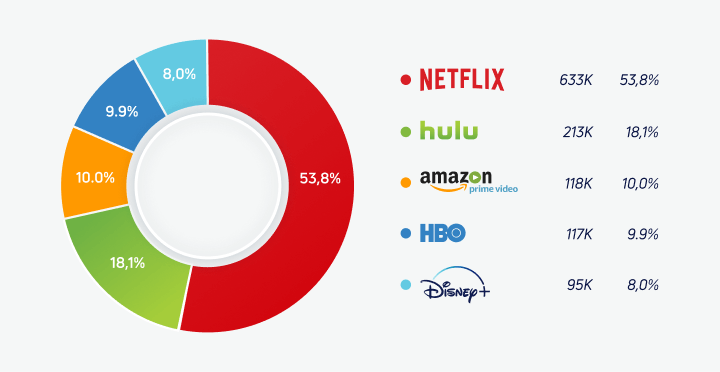5 easy steps to set SMART goals in marketing
Looking to set achievable marketing goals? Be SMART and follow these 5 steps!
Your product solves your customer’s problem efficiently. It looks good, it is easy to use and offers more value for its price than other available products. But your prospects don’t know that. Yet.
Now that your product is finished and ready to delight your customers, you need to do some marketing. Why? Because as sales expert Grant Cardone puts it, Best product does not win the game; best KNOWN product wins the game. If you want to learn more business takeaways from Grant, watch this 2-minute video.
Are you ready to start your marketing journey?
Let’s go!
First of all, we need to talk about marketing goals. There are many marketing goals you can set for your company depending on the stage you’re in.
Companies today don’t usually wait for the product to be finished, they begin to market the product while still in early development. It’s a smart move. What they are doing is building a tribe for their product and raising awareness for the company. The members of the tribe will be the first people to buy the finished product. They are more likely to become ambassadors for the product and the company can attract new customers from word of mouth marketing.
Marketing goals for this stage could be building an emailing list of enthusiasts interested in your product. These individuals would be your product’s die-hard customers and it would also be smart to find ways to get to know them and engage with them. And even ask for their ideas on features that could improve your product.
Once the product is finished, the company already has its first customers, it doesn’t start marketing from zero which could be a competitive advantage.
But if you’re company doesn’t take this build-it-before-it’s-finished approach, don’t worry, there are many other marketing goals you can set for your company.
Here are 6 marketing goals that you should set in 2021 to support your company to achieve its business vision:
- Increase brand awareness
- Empower your email subscribers
- Build brand ambassadors
- Boost your sales through referral programs
- Identify customer behaviour change
- Increase website traffic with guest content
If you want to know more about these six marketing goals, read this article where I discuss each of them in-depth.
Now that we’ve touched on the subject of marketing goals, let’s see what SMART and setting SMART goals in marketing means.
S.M.A.R.T. is the acronym for Specific, Measurable, Achievable, Relevant and Time-bound and refers to business objectives.
Consultant George T Doran is credited with writing down the S.M.A.R.T. acronym and laying out the main principles of SMART goals in his 1981 paper, “There’s a S.M.A.R.T. way to write management’s goals and objectives”.
Although the SMART concept was created to support good management, setting SMART goals goes beyond that and can be used as a rule of thumb for setting goals in every area, business or personal.
What does a SMART goal in marketing look like?
You first start with a SMART business goal.
Here’s an example. Let’s assume you have an online ladies’ shoe shop. You want to grow your business.
A SMART business objective should be defined like this:
Spring is around the corner. I want to sell 15% more ladies’ shoes for spring. To achieve this I will invest $1000 in Facebook ads targeted at young fashion-forward professional women for a period of 3 months.
Why is this business objective SMART?
Because it is specific and measurable.
There are many ways in which you can grow your business (partnerships, investments etc), but you have chosen to focus on sales. You also narrowed down the sales offer to shoes for the springtime, not office shoes or running shoes. The 15% increase in sales is measurable.
Let’s assume your sales have grown by 10% last year, therefore, a 15% increase is achievable whereas a 100% increase in sales would not be achievable.
You have also decided to invest $1000 in Facebook ads to target a specific customer base comprised of young fashion-forward professional women. Once again, specific and relevant to your business.
Your Facebook campaign will run for three months so the business objective is also time-bound.
Now that you know what a SMART goal in marketing should look like, I’ve put together a simple template with 5 easy steps that you can use to set SMART marketing goals for your company.
5 easy steps to set SMART marketing goals
1. Link the marketing goal to a business goal
As you saw in the example above, marketing goals must be relevant to the overall business goals.
So the first step is to set a marketing goal that relates to your business goal.
It could be a short-term goal like increasing sales of a specific product or it could be long-term business goals like increasing brand awareness or share of voice.
To increase sales you could set several marketing goals like increasing the number of qualified leads or increasing the number of email subscribers. To achieve long-term business goals like brand awareness you could increase the number of brand ambassadors or increase website traffic.
2. Establish the benchmark
Pulling numbers out of thin air is not going to help you achieve your goal.
Perform a marketing analysis before setting a new marketing goal. Run the numbers and come to a conclusion with regard to previous results.
How much does it cost to get a new customer or a new email subscriber?
What is the average cost per lead?
What is the current landing page conversion rate?
Learn how to calculate them and other key performance indicators in this two-part article.
Only after you know these numbers ie the benchmark, you can set achievable marketing goals.
3. Write the goal using the SMART framework
Follow the example above and make your marketing goal specific, measurable, achievable, relevant and time-bound.
4. Design the strategic plan you will use to achieve the SMART marketing goal
The goal of a strategic plan is to provide you with a roadmap to achieve set marketing goals.
The plan outlines what (resources), how (specific tools, activities, platforms etc) and why (the reasons behind your choice of a specific resource or tool) the company will use to achieve this goal.
Referring back to the online ladies’ shoe shop and its goal to increase sales by 15% through Facebook ads, you need to establish who will design the creative concept of the Facebook campaign and who will write the copy.
What is the format of the campaign: video, image, link? Once the campaign is ready to be launched, establish who will set the campaign in your company’s Facebook Ad account and solve any problems that might arise.
Should the customers reacting to your campaign need the help of your customer support, how are they going to reach your company?
A successful campaign is an eco-system where every factor is aligned and working in perfect harmony.
5. Implement & optimize
Now that your campaign is ready to go and you have planned everything in detail, you can implement the campaign and optimize it if necessary.
Join the Conversation
We’d love to hear what you have to say.
Get in touch with us on our LinkedIn Page, Facebook Page, Twitter or TikTok.
6 marketing goals you should set in 2021 to support your business vision
6 marketing goals you should set in 2021 to support your business vision
Increase brand awareness
Empower your email subscribers
Build brand ambassadors
Boost your sales through referral programs
Identify customer behaviour change
Increase website traffic with guest content
Let’s talk about each of them.
1. Increase brand awareness
If a stranger approached you in the street offering to be your friend would you accept? I can’t speak for you but I’m sure my answer would be I can’t be friends with someone I don’t know.
It’s the same with your brand: why do expect your customers to buy your products if they are not aware of your brand? That’s why brand awareness is an essential part of brand building. Brand awareness is a process leading to sales. The first stage of an effective sales funnel is awareness followed by interest, decision and action.
Brand awareness is also an ongoing process. Coca-Cola is the leading global soft drinks company and has been on the market for 128 years. You would be hard-pressed to find someone who hasn’t drunk a bottle of Coke in their life or is unable to recognize the brand’s iconic logo. This happens thanks to the company investing billions of dollars in campaigns. More precisely, $4 billion each year since 2015 to market its drinks to consumers around the world. If the company didn’t commit to this goal of maintaining and increasing brand awareness year after year, it would quickly lose the top spot and market share.
So how do you increase your brand’s awareness? It certainly helps to have a big budget but that’s not everything.
Let’s explore ways that you can increase awareness for your brand!
Share of voice
Marketing effectiveness expert Les Binet recommends that brands should run both sales activation and brand building campaigns but tweak the balance to 75% brand building and 25% activation.
Binet’s research found that sales activation delivers short-term sales volume while brand-building campaigns lead to long-term growth and higher sales volumes. Learn about brand awareness and why SOV (share of voice) is important for your brand (with examples).
Partnerships
As a business owner, you are competing with other businesses in your market for the attention of your customer base. What if you took a different approach and choose to build brand partnerships instead of competing with each other?
Here are 9 benefits of brand partnerships:
- Sharing customer bases;
- Break into new markets;
- Cross-selling;
- Expanding your customer base;
- Lead-generating opportunities;
- Brand strengths are amplified through collaboration;
- A great experience for the customers;
- Enhanced brand awareness and exposure.
If you decide that partnering is a good strategy for your company, there are factors you need to consider for a successful brand partnership before you draft your first contract.
Standing up for your brand’s values
Brands are no longer setting the pace for its consumers. In fact, it’s the other way around – consumers have the upper hand over brands.
Over the past few years, consumer behaviour reports have highlighted this fact: it’s important for consumers to see their favourite brands act on their beliefs and values.
A 2018 study from Shelton Group found that 86% of consumers want brands to take a stand on social issues and said they’d purchase a product because a company advocated for an issue they cared about.
There are many examples of big brands taking a stand on social issues and receiving praise from the public (Nike’s Dream Crazy, UK supermarket chain Iceland and its Say Hello to Rang-tan ad, Barbie’s Close the dream gap) while other brands are facing backlash for failing to engage with their customers’ needs and expectations and their outdated marketing (Victoria’s Secret).
2. Empower your email subscribers
Email marketing done right outperforms social media in terms of reach, CTR, conversion rate and ROI.
And by outperforming ROI I mean 42:1 which means for every dollar spent, your company’s return is 42 dollars.
To get this high of an ROI, you need to focus on the words done right.
First, make sure you don’t make these 5 email marketing mistakes and second, update your buyer’s persona especially at the pain points and dreams categories.
What stands between them and their goals? What are they dreaming to achieve? What do they need to meet their objectives? Find out what they need and give it to them.
Of course, your email marketing strategy should include sales-focused emails, but maintain a balance between promotional content and non-promotional content. If you don’t know what that balance is, you can start with the 80-20 rule of thumb: 20% sales content and 80% empowering content.
Once you have identified what empowering content looks like for your customers, invest your resources into designing the ways in which to deliver that content. Infographics, video, expert quotes, listicles, how-tos, links to in-depth articles etc.
Find a way in line with your brand goals to reward your most engaged subscribers.
Also, create the opportunity for your subscribers to get to know each other. The end objective of your email marketing strategy is to empower your subscribers individually and transform them into a community.
3. Build brand ambassadors
In 2018, marketing software provider Hubspot said goodbye to the marketing funnel and hello to the customer flywheel.
The shift happened when the company noticed that customers were purchasing HubSpot products after they have been recommended by their friends, already HubSpot customers.
The situation was that word of mouth was selling HubSpot products instead of the company’s marketing efforts.
The customer flywheel is not a funnel but a process where customers feed growth. The Customer Flywheel leverages the enthusiasm of existing customers and turns it into a driving force for attracting new customers.
What makes the flywheel spin faster and faster? Increased force and reduced friction. The more force with less friction applies to the flywheel, the faster it spins.
Once the flywheel gains momentum, it can spin forever with little effort from the company. Momentum comes from retaining customers and transforming them into brand ambassadors leading to increased customer retention and brand loyalty.
Learn more about improving customer retention and loyalty.
4. Boost your sales through referral programs
A referral program is a word-of-mouth marketing tactic that encourages customers to advocate on behalf of your brand.
The purpose of a referral program is to attract new leads. Compared to other lead generation tactics, the leads that referral programs generate are better because their profile is more likely to match that of your customers.
This means more qualified leads and less time and resources used by your company to nurture and engage them.
Referral programs have higher chances to succeed because they leverage the power of peer-to-peer marketing and one of Cialdini’s Principles of Influence: social proof. The social proof principle states that people will look to the actions of others to determine their own. Man is by nature a social animal: we are influenced by our environment and our friends.
Statistics support this: 90% of consumers trust peer recommendations and only 33% trust ads (Nielsen).
Here’s how to build a customer referral program.
5. Identify customer behaviour change
Thomas Cook was the world’s first travel agency, one of the leading companies in the leisure travel industry present in 17 countries, owned an airline and operated thousands of hotels around the world.
In 2019, Thomas Cook ceased its operations leaving around 600,000 tourists overseas including 150,000 British citizens. It was the UK’s biggest peacetime repatriation.
One of the reasons that led to Thomas Cook’s failure was this: the company missed the opportunity to include Millennials among its customers.
When Millennials entered the market, it was obvious that the market had to change. The Millennials would rather take more short trips i.e. city breaks throughout the year rather than one big vacation package. Also, Millennials behaved differently than their parents or grandparents in that they planned their own itineraries, used digital tools (like Airbnb or Booking.com), focused on transformational experiences and were influenced by social media or user-generated content (source).
The company failed to acknowledge this change in behaviour and adapt its offer to cater to the needs of this new type of customer. This and other factors contributed to the failure of Thomas Cook.
6. Increase website traffic with guest content
Does your company use social media as a marketing channel? I’m pretty sure the answer is yes.
According to the latest statistics, 77.6% of small businesses report using social media to promote their businesses.
What would your company do if Facebook, Instagram or YouTube suddenly disappeared?
That’s right, all your efforts would have been in vain. It’s not to say that you shouldn’t use any social media channels for your company. Only that you shouldn’t invest all your resources in them.
What you should do is invest a large portion of your resources into driving traffic to your website. Remember that social media platforms are rented space whereas your website is owned, you control what happens in your house.
To increase your website traffic consider featuring guest content on your company blog.
Guest content is a great way to expand your reach and increase brand awareness.
In order to achieve this goal, it’s essential that you choose the right contributing authors for your brand.
Whoever you choose, note that your brand will be associated with that particular contributor.
Make sure that your brand’s values are aligned with your contributor’s values.
And most importantly: the best guest content contributor is the one that your audience follows organically.
Join the Conversation
We’d love to hear what you have to say.
Get in touch with us on our LinkedIn Page, Facebook Page, Twitter or TikTok.
Why Share Of Voice is important for your brand
On this page:
What is Share Of Voice?
How to measure your brand’s Share Of Voice
Why is Share Of Voice important for your brand
Six tips to boost your brand’s Share Of Voice with examples
What is Share Of Voice?
Commonly referred to under the acronym SOV, Share Of Voice is the share of conversations generated around your brand, products or services on different digital marketing channels (news sites, blogs, forums, social media) in comparison to its direct competitors.
How do you measure your brand’s Share Of Voice?
Share of Voice is a percentage resulting from the following calculation: take the number of your brand’s mentions over a period of time, divide it by the total number of brand mentions (your competitors’ and your brand’s) over the same period of time then multiply the result by 100 and you get your brand’s Share Of Voice.
SOV = Your brand’s online mentions/Total number of your competitors’ online mentions x 100
Here’s an example of measuring Share Of Voice for the top five video streaming providers- HBO, Netflix, Hulu, Disney+ and Amazon Prime Video. As the calculation shows, Netflix has the highest Share Of Voice of the five providers.

Share Of Voice metrics for Top 5 video streaming providers (source: awario.com)
How to implement social listening
You cannot measure Share Of Voice without brand mentions and to get mentions you need to do social listening.
There are many social listening tools available for marketers, starting with Google Alerts which monitors the web and is free.
If you are looking for a more sophisticated social listening tool, you can choose from a slew of providers such as Brand24, Mention, Talkwalker or Awario.
Seven reasons why your brand should do social listening:
- Monitor and influence brand awareness
- Monitor and control brand crisis
- Find prospects and turn them into leads or customers
- Monitor your competition
- Find conversations your brand can join or learn from
- Find reviews and feedback
- Find influencers
Why is Share Of Voice important for your brand and business?
As marketers, we never stop thinking about the best idea fueling our next campaign. Whether it’s a blog post or a social media post, it’s our job to put out content that delights our customers.
What are your customers talking about when they refer to your brand?
First of all, are they talking about you at all?
Who does the talking: your leads, your customers or people in general?
Where are these conversations taking place: social media, forums, comments to news articles?
Answering these questions will give you an overall view of your brand’s awareness. If people are not talking about you, it’s time to come up with a brand awareness campaign that will help you gain attention and get people talking about your brand.

In his book, The Long and the Short of It: Balancing Short and Long-Term Marketing Strategies, co-author Les Binet recommends that marketers balance short- and long-term marketing strategies.
He argues that brands should run both types of campaigns but tweak the balance to 75% brand building and 25% activation.
“The digital revolution is leading to increased activation efficiency, and so a higher proportion should go to brand. It seems paradoxical, but what’s happening in the digital world means you need to build that brand even more”, Les Binet says.
Let’s say there are conversations centred around your brand. The next question is, are they positive or negative? Do they rave about your latest product, or are they complaining?
Becoming aware of these conversations is an excellent opportunity to jump in, thank your happy customers, then do your best to turn them into your brand’s ambassadors.
When you are dealing with complaining customers, it’s equally a good opportunity for your business to pinpoint blind spots and put the spotlight on aspects that should be improved.
Amazon founder and CEO Jeff Bezos calls complaining customers “divinely discontent”.
In his 2016 letter to shareholders, Jeff says “customers are always beautifully, wonderfully dissatisfied, even when they report being happy and business is great.”
If I were to choose only one factor responsible for Amazon’s success, it would be the company’s obsession with customers, EVERY customer, not only the happy ones.
6 recommendations to boost your brand’s Share Of Voice
There’s really no secret to boosting your brand’s Share Of Voice: you need to achieve top-of-mind awareness.
Top-of-mind awareness (TOMA) is an essential concept in consumer behaviour, marketing research and marketing communications by illustrating how well brands rank in the minds of consumers when thinking of a particular industry or category.
TOMA is defined as the first brand that comes to mind when a customer is asked an unprompted question about a category.
Let’s do a short exercise. Name the first brand that comes to mind when you think of running shoes, watches, ladies perfume, soft drinks. I’ll give you my answer: Nike, Rolex, Chanel and Coca-Cola. Was yours pretty much the same? That’s TOMA.
So how could your brand reach the coveted top-of-mind spot?
By staying in front of your prospects’ eyes for as long as possible. Coca-Cola has been the undisputed leader of the soft drinks category for the past 120 years.
![]() Be creative.
Be creative.
![]() Be relevant.
Be relevant.
![]() Be different.
Be different.
![]() Leverage the power of influencers (nano-, micro- or celebrities).
Leverage the power of influencers (nano-, micro- or celebrities).
![]() Appeal to your prospects’ wants instead of their needs.
Appeal to your prospects’ wants instead of their needs.
![]() Commit to your core values and be bold.
Commit to your core values and be bold.
Barbie – The Dream Gap Project
Ruth Handler, Barbie’s creator, has designed the now-famous doll as a way to tell little girls that they could aspire to be anything they wanted to be. Ruth’s insight was that girls of the 1950s no longer wanted to grow up just to be mothers.
Seventy years later, the company holds to its core values by launching its 2018 campaign The Dream Gap Project.
The campaign signals the brand’s commitment to close the gender gap. Oh, by the way: Barbie’s YouTube channel has over 9 million subscribers. By comparison, Apple, the billion-dollar tech company, has almost 12 million subscribers. That’s pretty good for a plastic doll!
The brand’s efforts to update its products and become a better example for every little girl has resulted in a boost in sales starting with 2017. In 2019, Mattel’s Barbie brand generated gross sales amounting to about $1.16 billion, up from about $1.09 billion the year before.
Nike – You can’t stop us
For Nike, the world’s leading athletic apparel maker, everyone is an athlete.
Every campaign launched by Nike is a brilliant illustration of the brand’s mission: doing everything possible to expand human potential. Nike is a brand synonymous with resilience, overcoming one’s limitations, working to reach one’s dreams, diversity and equality.
Nike’s campaigns are inspiring and motivating, but they also take a stand on controversial topics. Such is the case of Dream Crazy, Nike’s advert launched last year that touches on racial inequality and police brutality. The advert prompted a flood of debate and put the brand into the spotlight.
The latest Nike ad is You can’t stop us and is a masterful example of conveying the brand’s message with a creative twist, in this case – video editing.
Nike’s advertising appeals to people’s wants and dreams, is creative, bold and relevant. And this approach is good for the bottom line. In 2020, the Nike brand was valued at approximately $34.8 billion, which was an increase of over two billion U.S. dollars from 2019 (source).
Apple – The whole working-from-home thing
With a brand value of $140 billion, Apple ranks third in the top 100 most valuable brands in the world in 2020, following Amazon and Google (source).
Apple designs technology that works together seamlessly. In the workplace, “Apple products help employees work more simply and productively, solve problems creatively, and collaborate with a shared purpose.”
That’s an excerpt from the brand’s webpage dedicated to its business products.
Now imagine these fourteen words made up a brief and you have been tasked with creating a campaign based on them. Think of three ideas that you could pitch to Apple.
It’s a great scenario if you want to exercise your creativity. If you’re not in the mood, check out the brand’s campaign series – Apple at Work – The Underdogs.
The series checks every benefit outlined in the brief, in an entertaining way. The second episode – The whole working-from-home thing gets real with all the ups and downs of the work-from-home world we are all living in now and it has struck gold. The video was published two weeks ago and it’s already at 26 million views, making it Apple’s the most-viewed in the last three months.
Join the Conversation
We’d love to hear what you have to say.
Get in touch with us on our LinkedIn Group, Facebook Group or Twitter.
The 3 Best Ways to Measure Brand Awareness Accurately
Trillions of dollars are spent every year on brand campaigns, yet it is often the case that marketing teams are unaware of whether or not these campaigns have made a positive impact on brand awareness. That’s because it is notoriously difficult to measure brand awareness. Or at least it was.
In 2020, it is possible to accurately measure brand awareness.
Interested in how?
Keep reading to discover the three best ways to gather precise brand awareness data and make better marketing decisions.
Brand Tracking Software
By far the best, the most accurate way to measure brand awareness is by using brand tracking software.
Such software takes the guesswork out of brand marketing and really allows you to see which campaigns are making an impact on your brand awareness.
Fast-growing companies measure the success of their campaigns by evaluating the effect they have on brand awareness and brand perception.
The precise data provided by the software enables them to see if a campaign has improved brand awareness amongst their target audience.
Keep in mind that if you are running a few campaigns at the same time and across different channels, it can be tricky to tie success back to an individual element.
The best way to avoid this is to run local tests and then see if there are uplifts in regions where you are currently focusing activity vs. those where you are not.
Surveys
The thing about brand tracking software is that, while it is the best solution, you need to have a healthy budget to be able to cover the costs.
If your budget is minute but you like the idea of directly reaching out to your target audience to indicate brand awareness levels, running your own surveys with proactive customer service to back you up is one of the most cost-efficient options.
Surveys are a great way to determine if your target audience is aware of your brand. You can send them to a specific demographic and ask the exact questions you need to be answered.
While the insights gleaned from surveys will be valuable to your brand awareness goals, to really get an accurate measurement of performance, you need to have a marketing plan.
It is essential that you set measures in place before launching a brand campaign, and track the results during and after to accurately track brand awareness. This is essential with rebranding, as we know there are many failures in this area.
Another thing to keep in mind is that the companies running branding and marketing software have a team of researchers who write the survey questions on behalf of the brands in order to get the best possible insights. You don’t have this luxury when running your own surveys. Still, you can achieve your desired results if you make sure your surveys are fun to complete, easily understandable, and a reasonable length. And, very importantly, make it mobile-friendly to encourage completions.
Google Search Console
But what if you have no budget at all?
Then there is always good old Google.
Google Search Console is a free way to accurately measure brand awareness. Now, the tool does measure brand awareness in a different way to the previous two examples. Instead of getting insights straight from your target audience, you are dependent on tracking increases in website clicks and impressions around the time you are running a brand campaign.
Measuring impressions via Google Search Console is especially important in brand awareness campaigns.
Why?
Your target audience doesn’t necessarily have to click on something to become aware of your brand, they simply just have to see your campaign.
If you are using the Search Console to measure brand awareness and conversion rate optimization, Google recommends creating a cost-per-thousand-impressions campaign so you will pay based on impressions rather than clicks.
Additionally, you can get data for brand searches just one day after a campaign begins running. If people are searching using your brand name, you have reached the ultimate level of brand awareness: unaided brand awareness, where your brand is top of consumers’ minds.
There you have it – accurately measuring brand awareness is not as difficult as you once thought. Plus, you don’t need to have a big budget to get the insights your brand needs to grow. Dig into a few of the options mentioned in the article and determine which suits your brand the best. Have fun and enjoy making better marketing decisions!
Join the Conversation
We’d love to hear what you have to say.
Get in touch with us on our LinkedIn Group, Facebook Group or Twitter.
How to Skyrocket Your Startup’s Brand Awareness Using Social Media

Anyone can sell. But not everyone can create an awesome brand that people actually respond to for years and years.
Nike sells — but what’s kept them at the top of their game all these years is their brand. Being a brand means making a proper, long-term connection with people to the point where they trust you. In 2018 and beyond, one of the most cost-effective and authentic ways to raise awareness of your brand is via social media. It’s where your customers are, after all, and it’s much cheaper than hiring a brand agency.
Social media can be dicey, however. People go there to be social. They don’t want to be sold to. If you market your brand incorrectly, you could turn them away.
So how do you skyrocket your startup’s brand awareness using social media without putting people off?
In this article, we walk you through 6 steps you need to take.

1. Find Your Voice
In life, we get nowhere until we find out voice or feet. Until we answer the question, “who are we and what are our values?” we’ll keep making the wrong decisions.
It’s the same when it comes to your brand on social media. Until you find your voice, your message won’t hit the spot with your intended audience.
To help you define your voice, you need to look at your values. What does your brand stand for? Are you edgy and confrontational? Or are you family-oriented?
Take a look at your target audience, too. What’s their voice and would voice would they respond to?
Your voice will impact how you create all your messages on social media. It will give you consistency, and it will resonate with your audience better.

2. Be Friendly and Be a Part of the Conversation
Remember that people use social media to be social. This is basic stuff, and if you overlook it you’ll find it hard to make that all-important connection with people.
For now, forget about selling. Forget about the CTAs and the links to your landing page. Instead, focus on making a connection with people by being like them.
To that end, make your messages friendly, conversational, and positive. Engage people with questions, show empathy and — where possible — entertain them.
Keep things light, avoid too many promotional messages and refrain at all times from corporate language.
Don’t shy away from humour or slang. Just be natural and focused on building relationships.

3. Make Your Profiles Easy to Read and Understand
Who are you and what does your startup do?
Moreover, where can we go to find out more?
These are basic questions that you should answer in 2-3 sentences in your social media profiles.
When people click on your profiles, these 3 questions are the first ones they want answering. By answering them, you’re educating your audience about who you are and what you do, and you’re also giving them something to do by including link to your website.
Your profiles should be informative and educational, and you should also include a relevant profile picture.

4. Know What To Post and Where To Post It
There are several social media platforms you can use, from Facebook to LinkedIn. Not every single startup needs to be on each platform, and it’s also important that you know exactly what type of content audiences on specific platforms react to.
For example, the content you post on Facebook will be different to the content you post on Twitter. Facebook is a great place to post videos and content that solves your audiences problems, while Twitter is great for posting statistics and data, as well as infographics. It’s also a great place to engage with customers one-on-one, answering their queries.
The better you are at optimizing content for each social media platform, the easier it will be to skyrocket your startup brand’s awareness.

5. Create Value
People respond to valuable content. Research has shown that long-form content is shared more times than short-form content. Long-form content is defined as content that contains more than 1,200 words, and which offers in-depth answers to a specific problem.
The reason it’s shared so much? Simply because it offers value.
Forget going in for the sale for the moment and focus on providing as much value as you can to your social media audiences. What problems can you solve for them today? How are you going to solve them?
Don’t expect anything in return from this — just give and give. The more you give, the more receptive people will be to your brand. Over time, they will learn to trust you, and they’ll see you as the go-to expert in your niche.

6. Skyrocket Your Brand Awareness With Videos
1/3 Instagram users watch videos on Instagram Stories each day, while the social media platform also recently launched IGTV. This allows you to post content to your own channel.
Meanwhile, we consume over 100,000,000 hours of videos on Facebook each day.
One of the best ways to use videos to raise awareness of your brand is to live stream. This might be an interview with an expert, or it could be a Q&A session that you hold on the fly. Live stream works because it’s interactive (people can leave comments that you react to), it’s engaging, and it shows that your brand is authentic. You are live and in the flesh — you’re the real deal.
Conclusions
These are 6 ways to skyrocket your startup’s brand awareness using social media.
Once you’ve found your voice and understood what your audience wants to see, it’s then a case of creating as much value as possible while engaging and connecting with your audience.
Forget the sale for now and focus on building relationships.
If you do this, your brand will grow so much that prospects are more likely to turn into loyal, long-term customers.
Blogging for Business – 5 Occasions You Should Blog About
In our previous article related to blogging for business, we talked about 7 subjects you should write about on your company blog.
In this article, we are going to address a different subject: the specific moments and occasions you should write about on your company blog.
Besides writing articles addressing your customers’ problems and pain points, your company blog should include articles designed to increase brand awareness and engagement.
Here are 5 occasions you should blog about:
1. Before and after your event/campaign

If you are organising an event or running a campaign, write a before and after article. Let your readers know all about your event: location, what your company’s goals are for this event, who is attending your event etc.
In your after the event article, talk about how the event turned out, mention a few statistics (how many people attended and other details), reviews, photos and videos.
2. Company celebrations / business anniversaries / achievements / milestones

Whether your company celebrates one year or ten of being on the market, don’t pass on the occasion for writing a celebratory article on your company blog. Talk about your company values, your founders and current CEOs, how your company is adapting to the changing business environment etc.
Business achievements or other important milestones are great moments to share with your audience. But don’t make it about numbers or statistics. Focus on the human element of your company or deliver the vision the founders had when they started the company. Use storytelling techniques to draw your readers in and help them truly connect with your story.
In July, Buffer bought out their venture capital investors and wrote an in-depth article on their blog announcing the major change:
We Spent $3.3M Buying Out Investors: Why and How We Did It.
3. New products launch

When launching a new product line, write an article on your company blog showing behind the scene photos or how it’s done, and the reasons that led to this new product or service.
Here is how Joe Pulizzi announced the birth of a new platform dedicated to entrepreneurs who want to be big:
How Entrepreneurs Can Conquer Goliath with Content Marketing [Announcing Content Inc.]
4. New employees/management/clients/partners

Instead of mentioning your latest clients or partners in a list published on your website, take your time and get to know them.
Increase your brand by lifting the brand of your clients. Use your company blog as a platform for inspirational articles focused on your clients.
Here’s how Slack is writing the story of his client while showing the benefits of their product:
Sweet, sweet collaboration at Molly Moon’s Homemade Ice Cream.
5. Employee-focused events

Your employees are the most important resource of your company. Studies have found that employee happiness and engagement are directly linked to productivity and business success.
In our previous article Keeping your employees happy is more than a higher paycheck, we found 6 factors, which contribute to the increase of employee engagement and loyalty. One of these factors was supporting your employees to grow personally and professionally.
Read how Mailchimp supports its employees:










